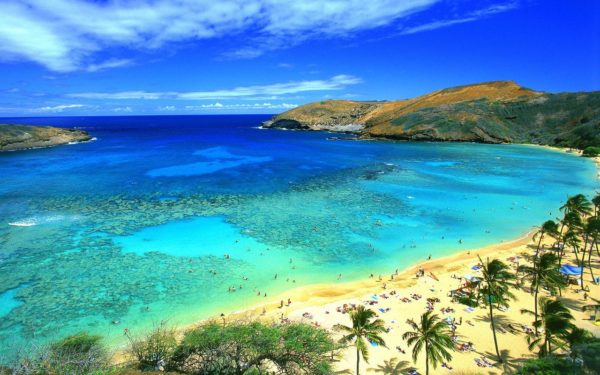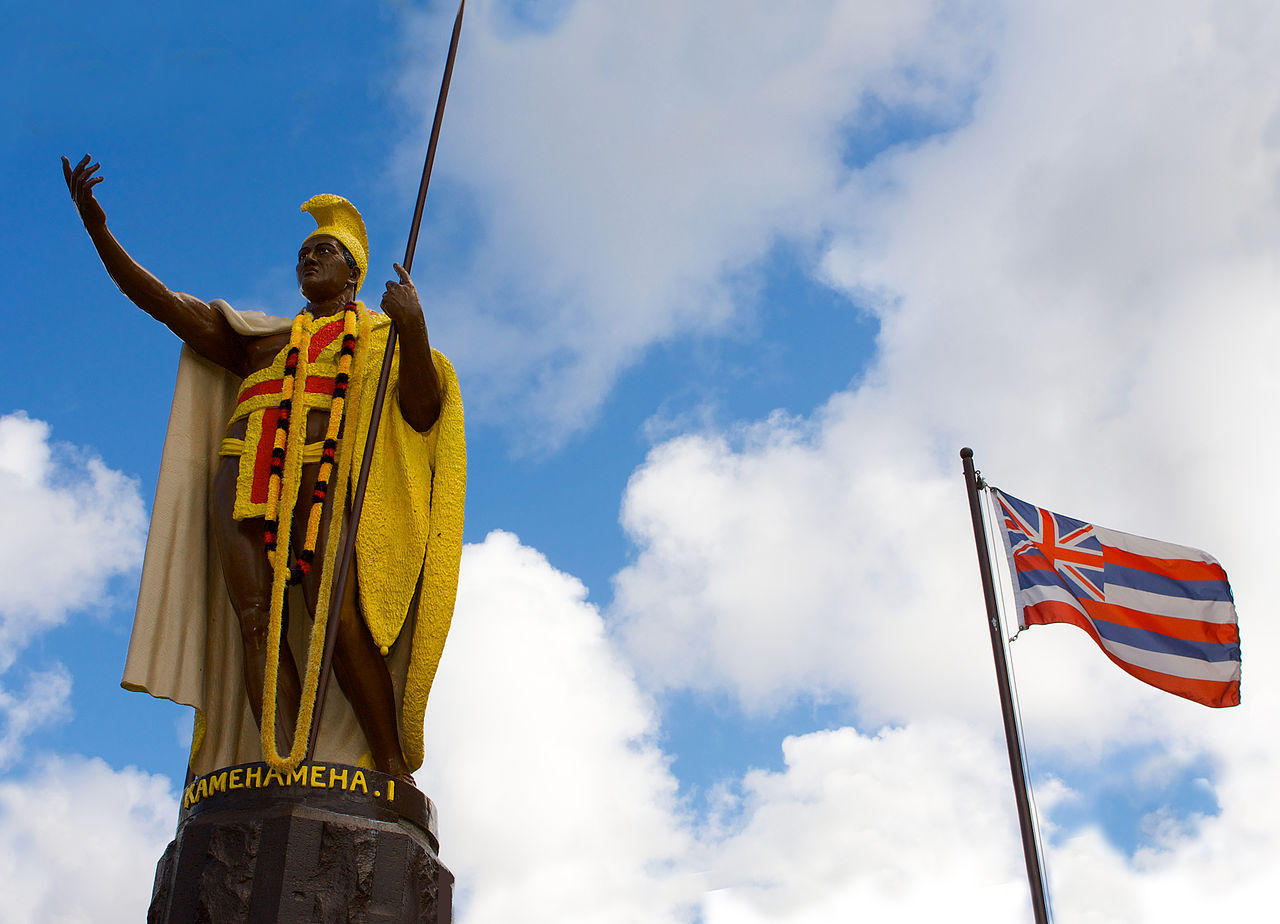The state encompasses nearly the entire Hawaiian archipelago, 137 islands spread over 1,500 miles (2,400 km). The volcanic archipelago is physiographically and ethnologically part of the Polynesian subregion of Oceania.[11] At the southeastern end of the archipelago, the eight main islands are, in order from northwest to southeast: Niʻihau, Kauaʻi, Oʻahu, Molokaʻi, Lānaʻi, Kahoʻolawe, Maui, and the largest, Hawaiʻi, which the state is named after. It is often called the "Big Island" or "Hawaii Island" to avoid confusion with the state or archipelago.
Hawaii is the 8th-smallest geographically and the 11th-least populous, but the 13th-most densely populated of the 50 states. It is the only state with an Asian American plurality. Hawaii has more than 1.4 million permanent residents, along with many visitors and U.S. military personnel.
The Hawaiian archipelago is located 2,000 mi (3,200 km) southwest of the contiguous United States.[31] Hawaii is the southernmost U.S. state and the second westernmost after Alaska. Hawaii, like Alaska, does not border any other U.S. state. It is the only U.S. state that is not geographically located in North America, the only state completely surrounded by water and that is entirely an archipelago, and the only state in which coffee is commercially cultivable.
In addition to the eight main islands, the state has many smaller islands and islets. Kaʻula is a small island near Niʻihau. The Northwest Hawaiian Islands is a group of nine small, older islands to the northwest of Kauaʻi that extend from Nihoa to Kure Atoll; these are remnants of once much larger volcanic mountains. Across the archipelago are around 130 small rocks and islets, such as Molokini, which are either volcanic, marine sedimentary or erosional in origin.[32]

Based on archaeological evidence, the earliest habitation of the Hawaiian Islands dates to around 300 CE, probably by Polynesian settlers from the Marquesas Islands.[dubious – discuss] A second wave of migration from Raiatea and Bora Bora took place in the 11th century.
The date of the human discovery and habitation of the Hawaiian Islands is the subject of academic debate.[52] Some archaeologists and historians think it was a later wave of immigrants from Tahiti around 1000 CE who introduced a new line of high chiefs, the kapu system, the practice of human sacrifice, and the building of heiau


The 1778 arrival of British explorer Captain James Cook marked the first documented contact by a European explorer with Hawaiʻi. Cook named the archipelago "the Sandwich Islands" in honor of his sponsor John Montagu, 4th Earl of Sandwich, publishing the islands' location and rendering the native name as Owyhee. The form 'Owyhee' or 'Owhyhee' is preserved in the names of certain locations in the American part of the Pacific Northwest, among them Owyhee County and Owyhee Mountains in Idaho, named after three native Hawaiian members of a trapping party who went missing in the area.[54]
It is very possible that Spanish explorers arrived in the Hawaiian Islands in the 16th century, two hundred years before Cook's first documented visit in 1778. Ruy López de Villalobos commanded a fleet of six ships that left Acapulco in 1542 bound for the Philippines, with a Spanish sailor named Juan Gaetano aboard as pilot.
During the 1780s, and 1790s, chiefs often fought for power. After a series of battles that ended in 1795, all inhabited islands were subjugated under a single ruler, who became known as King Kamehameha the Great. He established the House of Kamehameha, a dynasty that ruled the kingdom until 1872.[67]

After Kamehameha II inherited the throne in 1819, American Protestant missionaries to Hawaiʻi converted many Hawaiians to Christianity. They used their influence to end many traditional practices of the people.[68][69] During the reign of King Kamehameha III, Hawaiʻi turned into a Christian monarchy with the signing of the 1840 Constitution.[70] Hiram Bingham I, a prominent Protestant missionary, was a trusted adviser to the monarchy during this period.
Missionaries from each major group administered to the leper colony at Kalaupapa on Molokaʻi, which was established in 1866 and operated well into the 20th century. The best known were Father Damien and Mother Marianne Cope, both of whom were canonized in the early 21st century as Roman Catholic saints.